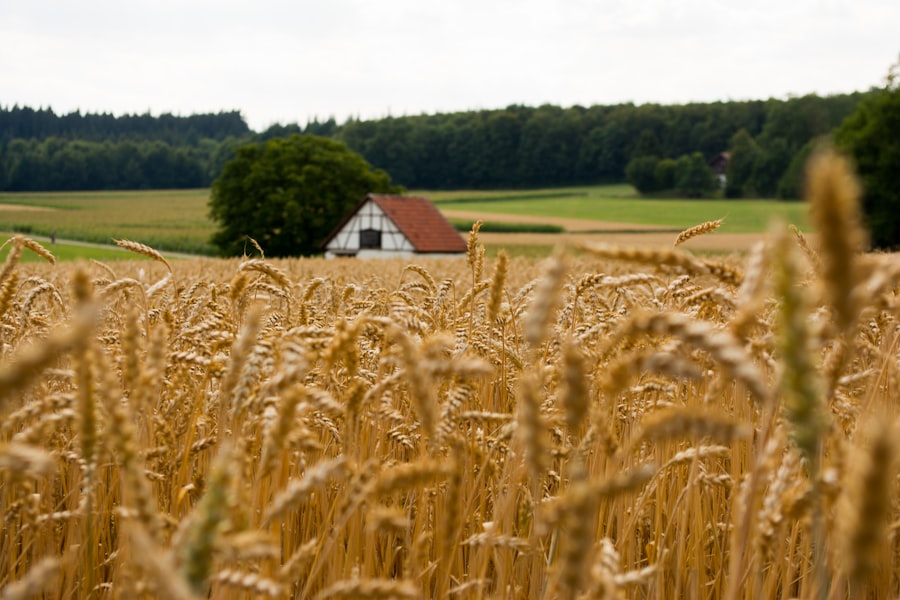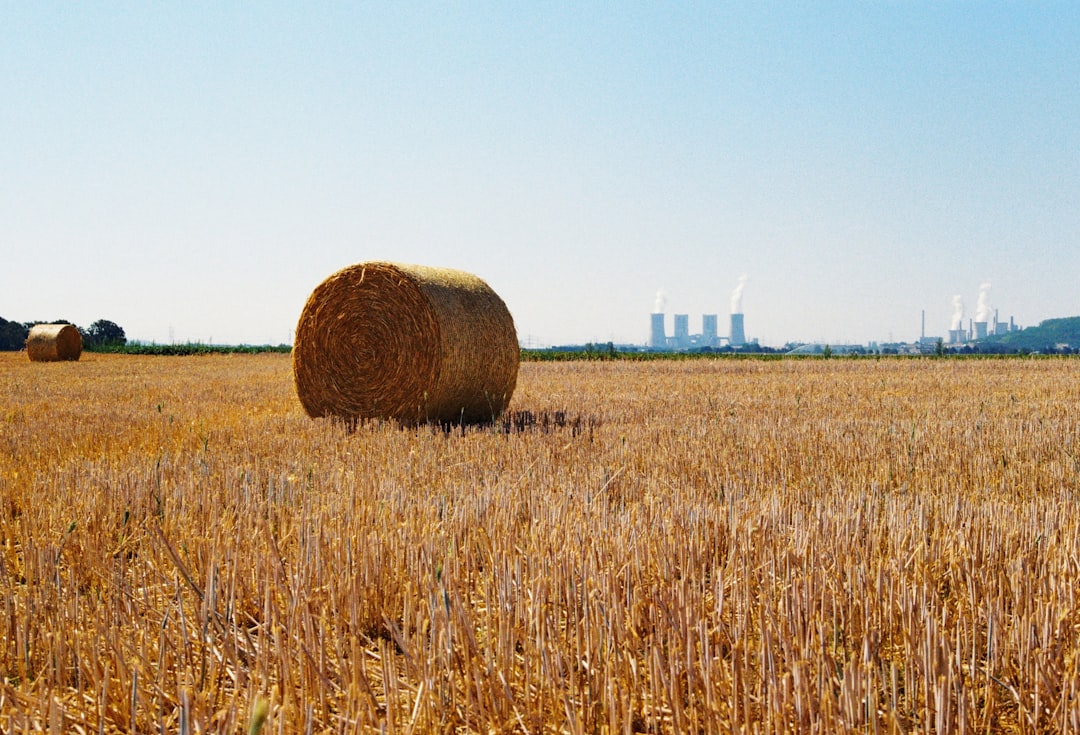Farmland has emerged as a compelling asset class for investors seeking to diversify their portfolios and hedge against inflation. Unlike traditional commodities such as gold or oil, farmland represents a tangible asset that not only provides potential capital appreciation but also generates income through agricultural production. The intrinsic value of farmland is tied to its ability to produce food, fiber, and fuel, making it a critical component of the global economy.
As the world’s population continues to grow, the demand for agricultural products is expected to rise, further enhancing the appeal of farmland as a long-term investment. Investors are increasingly recognizing farmland as a stable investment option that can withstand economic fluctuations. The historical performance of farmland has shown resilience during market downturns, often providing a buffer against volatility.
This stability is attributed to the essential nature of agriculture; regardless of economic conditions, people will always need food. Consequently, farmland investments can serve as a safeguard against inflation and currency devaluation, making them an attractive choice for those looking to preserve wealth over time.
Key Takeaways
- Farmland is a tangible commodity investment that offers long-term potential for returns and portfolio diversification.
- Investing in farmland provides advantages such as stable income, potential for capital appreciation, and a hedge against inflation.
- Factors to consider when investing in farmland include location, soil quality, water availability, and management practices.
- Potential risks of farmland investment include market volatility, environmental factors, and regulatory changes.
- Evaluating the profitability of farmland investment involves analyzing factors such as crop yields, rental income, and potential for land appreciation.
The Advantages of Investing in Farmland
One of the primary advantages of investing in farmland is its potential for consistent income generation. Farmland can produce rental income through leasing arrangements with farmers or agricultural operators. This income can provide a reliable cash flow, which is particularly appealing for investors seeking passive income streams.
Additionally, farmland often appreciates in value over time, driven by factors such as increasing demand for food and limited supply of arable land. This dual benefit of income and appreciation makes farmland an attractive investment option. Another significant advantage is the low correlation of farmland with traditional financial markets.
Unlike stocks and bonds, which can be highly volatile and influenced by economic cycles, farmland tends to exhibit more stable returns. This characteristic allows investors to reduce overall portfolio risk by incorporating farmland into their investment strategies. Furthermore, farmland investments can provide a hedge against inflation, as rising prices for agricultural products often lead to increased land values and rental rates.
This unique combination of income stability and inflation protection positions farmland as a valuable asset in any diversified investment portfolio.
Factors to Consider When Investing in Farmland

When considering an investment in farmland, several critical factors must be evaluated to ensure a sound decision. Location is paramount; the productivity of farmland can vary significantly based on geographic region, soil quality, climate conditions, and access to water resources. Investors should conduct thorough research on the agricultural potential of specific areas, taking into account local market conditions and trends in crop production.
Understanding the regional agricultural landscape can help investors identify high-potential opportunities and avoid less productive areas. Another essential factor is the type of crops or livestock that will be produced on the farmland. Different agricultural products have varying levels of demand and profitability, influenced by consumer preferences and market trends.
Investors should assess the viability of specific crops or livestock in relation to current market conditions and future projections. Additionally, understanding the operational aspects of farming—such as labor requirements, equipment needs, and technological advancements—can provide valuable insights into the potential success of an investment in farmland.
The Potential Risks of Farmland Investment
| Types of Risks | Description |
|---|---|
| Market Risk | The potential for farmland values to decrease due to changes in market conditions. |
| Operational Risk | Risks associated with the day-to-day management and operation of the farmland, such as weather-related issues or crop failure. |
| Regulatory Risk | The risk of changes in government policies or regulations that could impact farmland investment returns. |
| Environmental Risk | Potential risks related to environmental factors, such as pollution or natural disasters, that could affect the value of the farmland. |
Despite its many advantages, investing in farmland is not without risks. One significant risk is the inherent unpredictability of agricultural production due to factors such as weather conditions, pests, and diseases. Crop failures or reduced yields can severely impact income generation and overall profitability.
Investors must be prepared for the possibility of adverse events that could affect their returns and should consider strategies to mitigate these risks, such as diversifying crop production or investing in regions with favorable climates. Market fluctuations also pose a risk to farmland investments.
A decline in prices for key crops can lead to reduced rental income and lower land values. Investors should stay informed about market trends and be prepared to adapt their strategies accordingly. Additionally, regulatory changes related to land use, environmental protections, and agricultural practices can impact the profitability of farmland investments, making it essential for investors to remain vigilant about potential policy shifts.
How to Evaluate the Profitability of Farmland Investment
Evaluating the profitability of a farmland investment requires a comprehensive analysis of various financial metrics and market conditions. One key metric is the capitalization rate (cap rate), which measures the relationship between net operating income and property value. A higher cap rate indicates a potentially more profitable investment, while a lower cap rate may suggest lower returns.
Investors should also consider cash-on-cash return, which assesses the annual cash flow relative to the initial investment amount. These metrics provide valuable insights into the financial performance of a farmland investment. In addition to financial metrics, investors should analyze local market conditions and trends that could impact profitability.
Factors such as demand for specific crops, competition among farmers, and access to markets play a crucial role in determining potential returns. Conducting a thorough market analysis can help investors identify opportunities for growth and assess the long-term viability of their investment. Engaging with local agricultural experts or consultants can also provide valuable insights into market dynamics and help investors make informed decisions.
The Role of Farmland in Diversifying an Investment Portfolio

Farmland plays a vital role in diversifying an investment portfolio due to its unique characteristics and low correlation with traditional asset classes. By incorporating farmland into their portfolios, investors can reduce overall risk while potentially enhancing returns. The stability of farmland investments can provide a counterbalance to the volatility often associated with stocks and bonds, making it an attractive option for risk-averse investors seeking to preserve capital.
Moreover, farmland investments can offer exposure to global economic trends related to food production and consumption. As populations grow and urbanization increases, the demand for agricultural products is expected to rise significantly. This trend presents opportunities for investors to capitalize on long-term growth potential in the agricultural sector.
By diversifying their portfolios with farmland investments, investors can position themselves to benefit from these macroeconomic trends while mitigating risks associated with more traditional investments.
The Impact of Climate Change on Farmland Investments
Climate change poses significant challenges and opportunities for farmland investments.
Investors must be aware of these risks when evaluating potential farmland investments and consider how climate change may impact specific regions or crops over time.
On the other hand, climate change also presents opportunities for innovation in agriculture. Advances in technology, such as precision farming and sustainable practices, can help mitigate some of the adverse effects of climate change on crop yields. Investors who prioritize environmentally sustainable practices may find themselves better positioned for long-term success as consumer preferences shift toward sustainably produced food products.
By staying informed about climate-related trends and investing in resilient agricultural practices, investors can navigate the challenges posed by climate change while capitalizing on emerging opportunities.
Government Policies and Regulations Affecting Farmland Investments
Government policies and regulations play a crucial role in shaping the landscape for farmland investments. Agricultural subsidies, land use regulations, and environmental protections can significantly impact the profitability and viability of farming operations. Investors must stay informed about relevant policies at both federal and local levels that could affect their investments.
For instance, changes in subsidy programs may influence crop prices and farmers’ decisions regarding what to plant. Additionally, zoning laws and land-use regulations can affect the availability of land for agricultural purposes or impose restrictions on certain farming practices. Understanding these regulatory frameworks is essential for investors looking to navigate potential challenges and capitalize on opportunities within the agricultural sector.
Investing in Farmland through Real Estate Investment Trusts (REITs)
For those who may not have the capital or expertise to invest directly in farmland, Real Estate Investment Trusts (REITs) offer an accessible alternative. Farmland REITs allow investors to gain exposure to agricultural land without the need for direct ownership or management responsibilities. These trusts typically acquire large tracts of farmland and lease them to farmers or agricultural operators, generating rental income for shareholders.
Investing in farmland through REITs provides several advantages, including liquidity and diversification across multiple properties and regions. Shareholders benefit from professional management teams that handle operational aspects while providing regular dividends based on rental income generated from leased properties. This structure allows investors to participate in the growing agricultural sector while minimizing some of the risks associated with direct ownership.
The Long-Term Outlook for Farmland Investments
The long-term outlook for farmland investments remains positive due to several compelling factors driving demand for agricultural products. As global populations continue to rise, coupled with increasing urbanization and changing dietary preferences, the need for food production will only intensify. This trend suggests that farmland will likely appreciate in value over time as competition for arable land increases.
Additionally, advancements in agricultural technology are expected to enhance productivity and efficiency within the sector. Innovations such as genetically modified organisms (GMOs), precision agriculture techniques, and sustainable farming practices are likely to improve yields while addressing environmental concerns. These developments present opportunities for investors who are willing to adapt their strategies in response to evolving market dynamics.
Tips for Successful Farmland Investment
To achieve success in farmland investment, several key strategies should be considered. First and foremost, conducting thorough due diligence is essential before making any investment decisions. This includes researching local market conditions, understanding soil quality and water availability, and evaluating potential risks associated with specific crops or farming practices.
Networking with industry professionals—such as agronomists, local farmers, or agricultural consultants—can provide valuable insights into market trends and best practices within the sector. Additionally, staying informed about technological advancements in agriculture can help investors identify innovative solutions that enhance productivity and sustainability. Finally, maintaining a long-term perspective is crucial when investing in farmland.
While short-term fluctuations may occur due to market conditions or weather events, successful farmland investments often require patience and a commitment to understanding the complexities of agriculture over time. By adopting a strategic approach that prioritizes research, networking, and long-term planning, investors can position themselves for success in this unique asset class.
Farmland has increasingly become a sought-after commodity, attracting investors looking for stable and long-term returns. As global demand for food continues to rise, the value of agricultural land is expected to appreciate, making it an attractive investment option. For those interested in exploring this topic further, an insightful article on the dynamics of farmland as a commodity can be found on How Wealth Grows. This article delves into the factors driving the demand for farmland and its potential as a lucrative investment. To read more, visit
